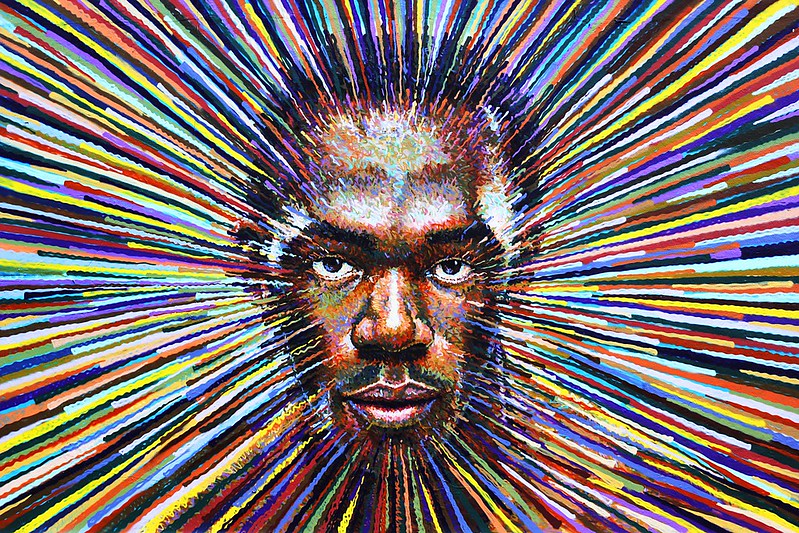Quite possibly this picture has the most visual impact of the sequence I took when shooting for my PAD 254 post. It was taken in St Pancras station and is part of the frieze around the base of the Lovers statue. I did not select it as my image of the day as I felt it was too derivative of the original artist's work for me to be comfortable in calling it my own. What I will say at the outset is that this is entirely a personal view and that this type of record work is definitely a valid form of photography.
There is a contradiction here as much of my photography involves capturing the world around me, in other words I react to whatever is going on. Many photographers operate similarly, including many of the most well known, and there is nothing wrong with that approach. When I do try to set something up for the camera, usually I am not very happy with the results. So what is the difference between this shot and the one of the canal boats which I eventually chose as my PAD shot?
Both required some effort on my part to get to the locations and involved an element of seeing when I got there. With the canal boats, I recognised the potential in the scene, but really wanted something to fill the left hand side of the image. Ordinarily, that would usually mean a period of waiting, but would you believe that within moments the narrow boat appeared and that was the only one I saw moving on the canal the whole time I was there? When processing the image, I cropped slightly and did some work to bring out the textures in the sky and the building on the right. All very routine and straightforward.
With this image, the process was very similar. I saw the artwork, selected a part of it that I found appealing and took the photo. The frieze is circular and not very high, so afterwards I needed to crop into a panoramic format. Actually, getting that right turned out to be a bit fiddly and I needed a few attempts to get it how I wanted, then processed it to bring out the textures. Had I been more serious about using this image, I would have gone further and made other changes:
- Fill in the area at top left where the curvature of the frieze has created a gap
- Remove the line at bottom left, which is also due to the curvature
- Darken the area at bottom right under the nose
- Add a small amount to the top of the image as I feel that the spectacles are slightly too close to the top edge of the frame, although this is how it is reality.
All these are tweaks and do not fundamentally change the nature of the shot. I like the image, but do not feel that I have done enough to assert any real form of ownership and most of the input is from someone else. Once again, I emphasise that that there is nothing wrong with this type of photography and it is difficult to know where to draw the line. For example, architecture photography is all about interpreting the work of others and I have no qualms about including buildings in my photos.
What do others think?

